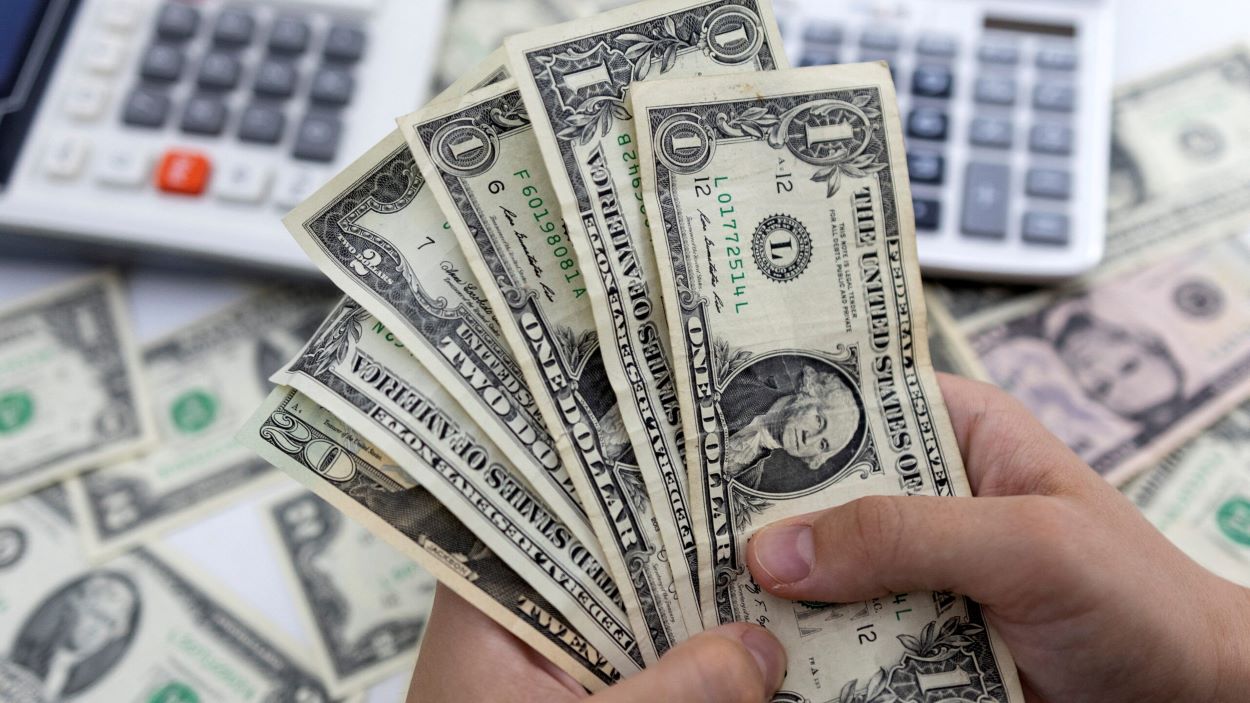The U.S. dollar dropped to its lowest point in over a week on Wednesday, signalling a decrease in global trade war concerns, while the Japanese yen strengthened following robust wage data.
On Wednesday, the dollar index, which compares the U.S. dollar to six major currencies, decreased by 0.565% to 107.44, reaching its nadir since January 27 at 107.29.
The dollar surged as much as 1.3% to 109.88 on Monday as U.S. President Donald Trump prepared to impose 25% import tariffs on Mexico and Canada. However, it dropped approximately 2% after both nations secured a one-month delay by enhancing border security despite the U.S. raising tariffs on China.
The euro appreciated by 0.38% to $1.042 after dropping 2.3% on Monday. Fears about the worldwide effects of tariffs and potential extensions to the European Union drove this.
On Wednesday, the dollar experienced its sharpest drop against the yen, influenced by robust wage data from Japan and a Bank of Japan official’s suggestions of potential rate increases. The U.S. currency fell 1.38% to 152.195, its lowest point since December.
“This morning’s dollar pullback appears to continue recent trends, with markets reducing tariff risks from FX markets,” observed Nick Rees, head of macro research at Monex Europe.
The following data indicated a slowdown in U.S. service sector activity in January due to decreasing demand, and the dollar continued to lose ground against the yen. The Institute for Supply Management reported its non-manufacturing PMI declined to 52.8 from December’s 54.0, contrary to expectations of a slight increase to 54.3.
Japanese inflation-adjusted real wages in December rose 0.6% year over year, boosted by winter bonuses. This increased bets on more rate hikes from the Bank of Japan, with just over 30 basis points expected by year’s end.
Sterling rose by 0.24% after reaching a month-high of $1.255.
Following Trump’s imposition of new 10% tariffs on China on Monday, the yuan slightly dipped as markets returned from the Lunar New Year break. In onshore trading, the yuan declined by 0.49%, with its rise restricted by the People’s Bank of China, which established an unexpectedly robust midpoint rate.
As investors looked for signs of Beijing’s strategy in the yuan’s fixing, China quickly retaliated on Tuesday by imposing tariffs on U.S. imports. Trump mentioned he was not rushing to contact Chinese President Xi Jinping to ease tensions.






